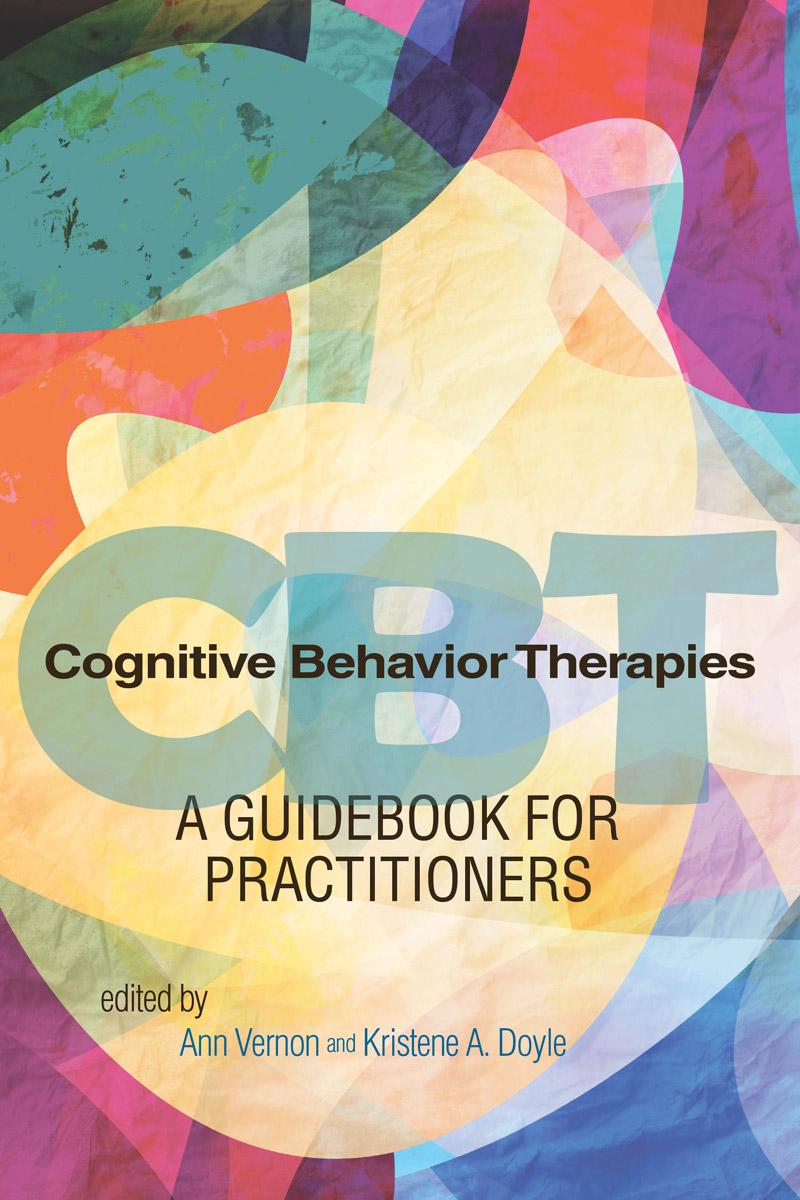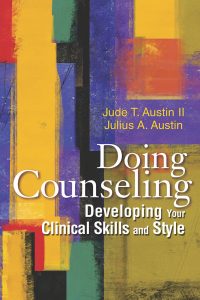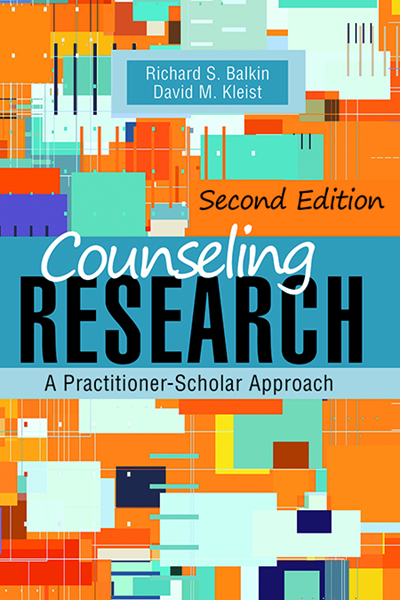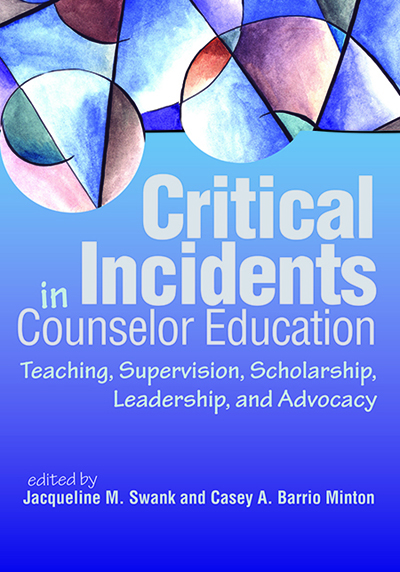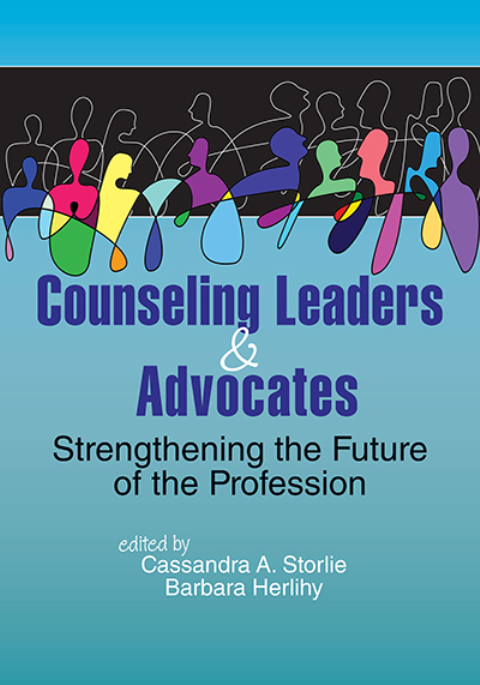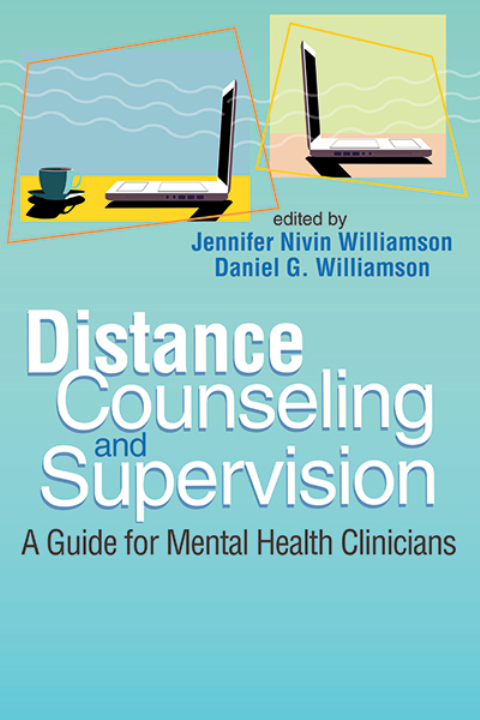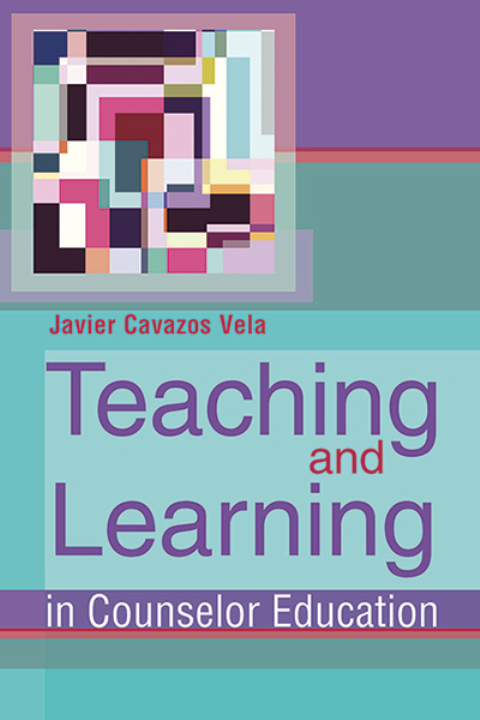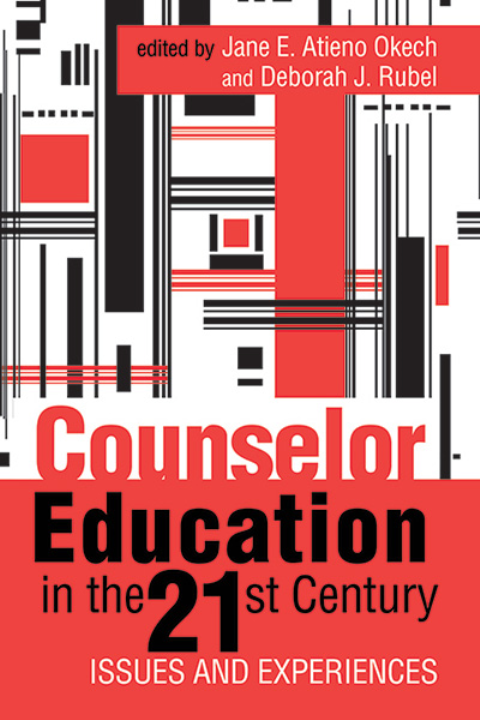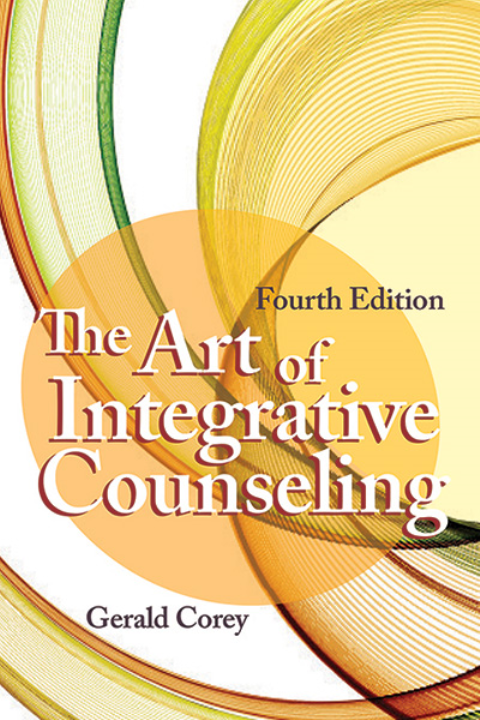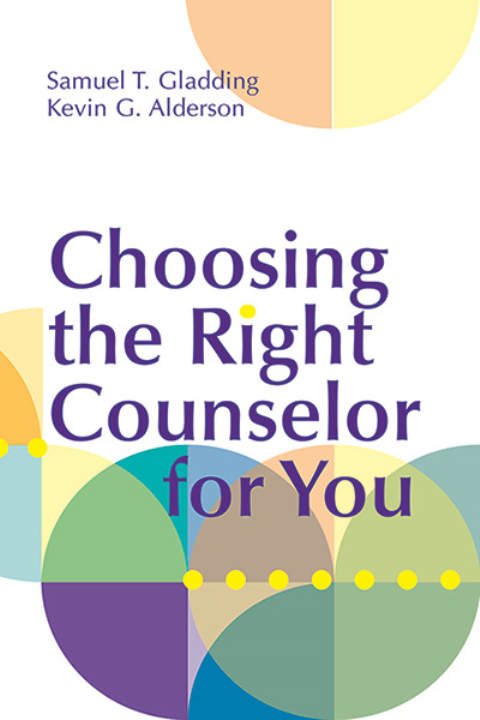
Professional development, a lifelong process
Counselors have the ethical responsibility of engaging in ongoing professional development, so they can remain informed about best practices, keep their competence in the skills they use, and maintain a reasonable level of awareness of current scientific and professional information. Mentorship is also an important part of a counselor's professional development process.
Related Articles from Counseling Today
An integral model for using empathy in counseling
Dec 22, 2023, 00:00 AM
Title :
An integral model for using empathy in counseling
By line :
Although empathy is considered a critical aspect of effective counseling, confusion about its definition and practical application often prevents it from being fully utilized in counseling. Contemporary counseling textbooks, for example, vary in how they discuss this topic. Some authors present empathy as a clinical skill, whereas others simply equate it to reflecting feelings. Still others align empathy with a small number of techniques such as immediacy or self-disclosure.
Narrow and superficial conceptualizations of empathy are common among scholars and practitioners in counseling and related human service fields. Defining it as “walking in a client’s shoes” or “understanding an individual’s world” seems simplistic and shallow. Even more clinical conceptions of this term such as “grasping a client’s cognitive and affective experiences” fail to capture the nuances and subtleties of empathic phenomena.
Thus, the current definitions of empathy in counseling literature do not always articulate the fullness and richness of the process. In addition, when discussing empathy, counselors and scholars often focus on the client’s frame of reference and rarely mention the internal experience of the counselor in this interaction.
The lack of clarity around how to use empathy in counseling practice is a missed opportunity to pursue its unrealized potential. Empathy, broadly speaking, involves understanding clients and fostering emotional connections. Maintaining these essential qualities as a function of empathy across a wide range of therapeutic skills enlivens and enriches the counseling process.
After several years of studying empathy in the counseling experience, I have developed an integral model of empathy — one that captures the complexities of this process and incorporates how it affects counselors as well as clients. This model defines empathy as a counselor’s attunement with the feelings and meanings of another individual through the engagement of subjective, objective and interpersonal empathic modalities.
 Arthur J. Clark is an ACA member and professor emeritus at St. Lawrence University. He is the author of Empathy and Mental Health: An Integral Model for Developing Therapeutic Skills in Counseling and Psychotherapy (2023) and Empathy in Counseling and Psychotherapy: Perspectives and Practices (2007). Contact him at aclark@stlawu.edu.
Arthur J. Clark is an ACA member and professor emeritus at St. Lawrence University. He is the author of Empathy and Mental Health: An Integral Model for Developing Therapeutic Skills in Counseling and Psychotherapy (2023) and Empathy in Counseling and Psychotherapy: Perspectives and Practices (2007). Contact him at aclark@stlawu.edu.
Opinions expressed and statements made in articles appearing on CT Online should not be assumed to represent the opinions of the editors or policies of the American Counseling Association.
Integral model of empathy
When using the empathy model, a counselor relies on what I refer to as an empathic use of self. In sustained interactions with a client, a counselor’s empathic use of self involves engaging subjective, objective and interpersonal modes of empathy through an integral framework. In the subjective mode, a practitioner resonates with internal sensibilities that momentarily connect with the lived experience of a client. The objective position mobilizes the counselor’s reasoning capacities by bringing to mind referential sources of knowledge and accumulated treatment experiences as a means of empathically understanding an individual. Moving into the interpersonal posture of empathy fosters an evolving client awareness in a relational context and informs the execution of a wide scope of therapeutic skills. Each of the three empathy modalities has identifiable qualities that are effectively applied on an individual basis. At the same time, the empathic modes are complementary and are more therapeutically impactful when used through an integral framework. A counselor’s engagement of a particular empathy stance depends on its saliency in immediate interactions with a client. Refining ways of knowing a client within the tripartite structure involves a cognitively complex process. In this pursuit, the ability to differentiate and integrate multiple perspectives gives rise to a deeper and more coherent understanding of an individual. Of course, facilitating the integral model of empathy is subject to reflective practice and development. The goal in counseling is to work toward effectively discerning modes of empathy and integrating them through an empathic use of self. Ultimately, this endeavor seeks to cultivate a more empathically attuned and effective counselor.Subjective empathy
Subjective empathy allows counselors to momentarily experience what it is like to be a client. Drawing on a practitioner’s common humanity, identification evokes a heightened sense of what it is like to be a client on a partial and temporary basis. Identifying with the joys and sorrows of another person, even when the experiences are culturally different, engenders a perceptible kinship found in empathy. For example, an African American client may express feelings of hurt and dismay when speaking about a recent incident of discrimination in therapy. Although a white counselor does not have personal experience with dealing with racial oppression and discrimination, they could identify with the client to a limited extent based on social encounters of distress and rejection. The capacity of a counselor’s imagination triggers mental images and emotional reactions when listening to evocative narratives of a client. A practitioner’s imaginal activity connects with the lived experience of an individual, including envisioning potential outcomes that seem vague or distant to a client. Consider, for instance, a young adult who is in treatment for substance use disorders. In a despairing tone, this client recounts how challenging it is to avoid spending time with a friend who has a serious drug issue. To better understand this situation, the counselor imagines the client walking near the neighborhood where his friend lives and pausing on a street corner. A few minutes later, the counselor fleetingly experiences a visual image of the client in the future voicing feelings of accomplishment for being drug free for an extended period. Drawing from a counselor’s life and counseling experience, intuition involves a rapid way of empathic knowing that is outside the realm of reasoning. With an immediate awareness and a sense of certainty, a practitioner recognizes explanatory patterns of client functioning that were previously unclear or questionable. In an assessment, for example, a client may recall an early recollection when using a projective technique in session. Almost simultaneously, the counselor intuits the theme or main idea of the individual’s first memory. Although the theme of the memory emerges rapidly, counselors are in a position to verify it through objective and interpersonal ways of knowing. Embodiment is a more visceral approach to empathy. Through an activation of embodiment in counseling, a practitioner periodically experiences sensations rooted in the body that contribute to empathically understanding a client. When an individual manifests physiological signs of tension, lethargy, relief or other somatic expressions, the counselor briefly reacts with similar bodily felt states. For instance, a client may express that they feel tired most of the day and often lack energy. As the client describes sitting on their couch watching television for hours at a time, the counselor begins to experience a sense of fatigue. A practitioner’s sensibilities of subjective empathy resonate in personal exchanges with a client. However, implications of the capacities only become therapeutically meaningful when a counselor embraces their potential to cultivate an experiential way of knowing a person.Objective empathy
With a shift to an objective empathy mode, a counselor’s empathic use of self becomes more focused on theoretically informed knowledge and accrued counseling experiences that are fundamentally different from the experiential quality of subjective empathy. From a broader perspective, however, converging subjective and objective modalities enhances a reasoned view of a client in lived contexts. While maintaining an awareness of subjective reactions with a client, a practitioner steps back and more dispassionately accesses conceptual material relating to an objective standpoint. Counselors can draw from their knowledge of diverse counseling orientations when using objective empathy. From the therapeutic tradition of reality therapy and choice theory, quality world encompasses internal images of what matters most to a person in their life. Take for example an early adolescent who comes to counseling because of failing grades. The school counselor is aware that the client highly values spending time with friends, riding a skateboard and wanting to own a motorcycle. Expressing an empathic grasp of the individual’s quality world is essential before attempting to expand perceptual foci to include academic performance in school. Defense mechanisms are psychological strategies that involve automatic and habitual responses of a person to perceived threat. Empathically understanding a client’s maladaptive defenses contributes to strategically processing ingrained patterns. In a treatment context, for instance, a client may discuss volatile personal events in muted emotional tones. The counselor recognizes the client is using isolation as a defense mechanism in which the client severs verbalized experiences from associated affect. This empathic awareness enables the counselor to effectively work with the individual through guidelines relating to the meaning and modification of the threat response. Through an empathic use of self, counselors can strengthen not only theoretical orientations but also clinical aspects such as diagnosis, multicultural dimensions and trauma-informed approaches. Clinicians use the Diagnostic and Statistical Manual of Mental Disorders (DSM) to gather evidence-based data to help them with assessment and diagnosis of mental health disorders. Some counselors, particularly those with a humanistic orientation, criticize the DSM because it categorizes individuals through labeling. However, it is possible to blend reputable sources of knowledge with humanizing and contextual perspectives through an integration of objective and subjective empathy modalities. Consider the example of a client who is in counseling for behavior consistent with a major depressive disorder. Although the counselor is able to discern symptoms of depression using the DSM and the client’s functioning, the process lacks context and does not account for the individual’s lived experience. After the counselor listens to the client’s stories through a subjective empathy posture, however, what it is like to be depressed day after day resonates with the counselor. Thus, combining experiential and reasoning ways of knowing generates inclusive, richer and potentially more accurate diagnostic formulations.Interpersonal empathy
Although the subjective and objective modes are vital for empathically understanding a client, the integral model is not fully realized until counselors also engage in the interpersonal mode. An interpersonal position emphasizes a sense of grasping the phenomenological experiencing of a client and formulating and executing a wide range of therapeutic skills. When moving into an interpersonal empathy posture, a counselor is aware of perceptions of a client that materialize from subjective and objective empathy perspectives that inform and shape counseling change. From an interpersonal stance, a counselor accesses an array of empathy-based stage and strategic skills. Stage skills are identifiable in three phases of the counseling process: relationship, integration and accomplishment stages. In the relationship stage, relational skills foster an empathic understanding and emotional connection with a client. Relational skills include reflection of feelings, reflection of meaning, encouragement, immediacy, questions, silence and self-disclosure. For example, a counselor may ask open questions to learn more about the client: “What is it like to be in a public setting (such as in class) when your mind wanders?” or “What did you hope would happen when you asked for help?” When conveying a question from an interpersonal empathy mode, the counselor attunes to a client’s nonverbal expressions. Using an objective empathy standpoint, the practitioner also draws from counseling guidelines and resources on the effective use of questions. And when the counselor shifts to a subjective empathy stance, the client’s reactions to the question resonates with the counselor. In the integration stage, integrative skills facilitate an awareness of client dysfunction and foster more purposeful ways of being. The integrative skills include confrontation, reframing, cognitive restructuring and interpretation. Reframing, for instance, involves inviting a client to explore alternate perceptions or perspectives to a particular problem or situation. After having developed an empathic way of knowing the client, the counselor suggests alternative, yet meaningful, ways of viewing problems and situations. From a subjective empathy posture, the counselor listens to the client’s story in context and recognizes dysfunctional and unhealthy thoughts. Shifting to an objective empathy position, the practitioner brings to mind more adaptive viewpoints. Using an interpersonal empathy mode, the counselor conveys an alternative and more purposeful perspective and guides the client in effectively reframing the negative thought or belief. The accomplishment stage emphasizes an empathic focus on engendering change and consolidating gains from the previous phases of counseling. At this point in the counseling process, the counselor has already forged a deeper relational connection with the individual and the client is typically ready to make a concerted effort to change. Accomplishable skills that help clients move toward change include the Adlerian techniques of breaking it down, catching oneself and acting “as if.” For example, if a client views a task as daunting because of its perceived magnitude, then the practitioner suggests “breaking it down” by segmenting the undertaking into smaller and more doable parts. In the interpersonal empathy mode, the counselor introduces the concept of breaking it down, while also being aware of application guidelines involving steps or procedures from an objective empathy stance. In turn, a subjective empathy posture resonates with the counselor as the client details action plans relating to segmenting the task into more manageable parts. Beyond the stage skills, strategic skills, including methodological conceptions and practice formulations, are among the most critical and challenging competencies for a counselor to navigate in counseling. Methodological conceptions include immediate and extended perceptions of a client, content and process, first- and second-order change, schema theory, multicultural dimensions, empathy and sympathy distinctions, and stages of the therapeutic process. Consider, for instance, first- and second-order change. First-order change stresses attention to immediate problems or symptoms of a client in situational contexts. This might involve issues such as divorce or separation, extended unemployment, academic failure or other distressful events. In contrast, second-order change focuses on ingrained and dysfunctional client perspectives or schemas that contribute to distress or impaired functioning. Without a preliminary empathic understanding of a client, decisions on the type of change required may result in flawed treatment planning and a misdirection in the counseling process. The strategic skills associated with practice formulations include response to threat, countertransference, alliance ruptures, dream work, nonverbal communication, practitioner distress and trauma, and individual assessment. For example, a practitioner may make remarks that a client experiences as offensive or threatening. This leads to an alliance rupture because it triggers strains and tensions between the counselor and client. When the counselor takes a subjective empathy stance, the client’s distressful reactions resonate with the counselor. By recognizing the relational impact of the alliance break from an objective empathy perspective, the practitioner also realizes they must also assume some personal responsibility for the infraction. Shifting to an interpersonal posture, the counselor communicates a lack of empathic awareness for the insensitive comments.An ongoing journey
Carl Rogers was well-known for his work on empathy, and toward the end of his life, I had the privilege to attend one of his public lectures where he spoke about wanting to know more about empathy. I remember being confused by Rogers’ remarks at the time. He was an expert on this topic, so why would he want or need to know more? How could there be more for him to even understand? But Rogers’ words began to take on new meaning as I continued my quest to better understand empathy in counseling. He reminded me that learning about empathy is not only an ongoing process but also an essential one because it helps us realize empathy’s potential to engender psychological healing. For me, playing a small part in this continuing journey is both gratifying and humbling. Arthur J. Clark is an ACA member and professor emeritus at St. Lawrence University. He is the author of Empathy and Mental Health: An Integral Model for Developing Therapeutic Skills in Counseling and Psychotherapy (2023) and Empathy in Counseling and Psychotherapy: Perspectives and Practices (2007). Contact him at aclark@stlawu.edu.
Arthur J. Clark is an ACA member and professor emeritus at St. Lawrence University. He is the author of Empathy and Mental Health: An Integral Model for Developing Therapeutic Skills in Counseling and Psychotherapy (2023) and Empathy in Counseling and Psychotherapy: Perspectives and Practices (2007). Contact him at aclark@stlawu.edu.
Opinions expressed and statements made in articles appearing on CT Online should not be assumed to represent the opinions of the editors or policies of the American Counseling Association.
Department :
Member Insights
Categories :
- Professional Counseling
- Professional Development
Tags :
audiences :
Contributors
Continuing Education on This Topic
Related Books
Related Practice Briefs
-
The Hidden Cost of Complex Trauma and Imposter Phenomenon in Academic Settings
The imposter phenomenon (IP) is a sense of intellectual fraudulence & inability to internalize success. It's a behavioral phenomenon to describe how women & other underrepresented groups experience pervasive feelings of self-doubt, worry, and fraudulence.
